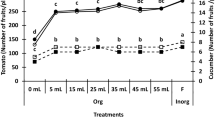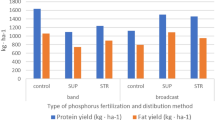Abstract
IN a small private-garden investigation into the disease 'whiptail' of cauliflowers, extreme symptoms appeared in those plants not treated with the group of trace elements manganese, zinc, copper and molybdenum. The matter was therefore studied more closely in the glasshouse. In an experiment involving some twenty combinations of two and three of the elements manganese, zinc, copper, molybdenum and boron with and without lime, and in which phosphate, potash and nitrogen were adequately provided, 'Whiptail' failed to develop. At an early stage of growth, however, all plants not supplied with molybdenum developed an intervenal chlorosis very similar to that described by Arnon and Stout2 in molybdenum-deficient tomatoes. The symptoms were much more pronounced where lime had been omitted. This is in line with a body of evidence5,7,8,11,12 that soil molybdenum is more available for plant uptake in limed or naturally alkaline soil. The unlimed plants in particular also showed the involution of the leaf edges and marginal necrosis seen in the tomatoes. The addition of sodium molybdate to the soil brought about a rapid recovery of the affected plants. No marked growth differences were associated with the symptoms and eventually all plants grew out of the condition. The habit of the plants was not normal in the glasshouse and they were not left to reach maturity.
This is a preview of subscription content, access via your institution
Access options
Subscribe to this journal
Receive 51 print issues and online access
$199.00 per year
only $3.90 per issue
Buy this article
- Purchase on Springer Link
- Instant access to full article PDF
Prices may be subject to local taxes which are calculated during checkout
Similar content being viewed by others
References
Anderson, A. J., J. Aust. Inst. Agrie. Sci., 8, 73 (1942).
Amon, D. J., and Stout, P. R., Plant Physiol., 14, 599 (1939).
Clayton, E. E., N.Y. State Agric. Exp. Stat. Bull, No. 506 (1924).
Fricke, E. F., Tasm. J. Agric, 14, 69 (1943).
Fricke, E. F., Tasm. J. Agric, 15, 65 (1944).
Fricke, E. F., Tasm. J. Agric, 16, 1 (1945).
Lewis, A. H., J. Agric. Set, 30, 52 (1943).
Lewis, A. H., J. Agric Sci., 30, 58 (1943).
Magee, C. J., Agric Gaz. N.S.W., 44, 911 (1933).
Ogilvie, L., and Hickman, C. J., Rep. Agric Hort. Res. Sta., Bristol, 142(1936).
Shaw, N. H., Nancy Barrie, and Kipps, E. H., J. Coun. Sci. Ind. Res., Australia, 17, 233 (1944).
Stephens, C. S., and Oertel, A. C., J. Coun. Sci. Ind. Res., Australia, 16, 69 (1943).
Stubbs, L. L., J. Dept. Agric, Victoria, Australia, 39, 211 (1941).
Author information
Authors and Affiliations
Rights and permissions
About this article
Cite this article
DAVIES, E. A Case of Molybdenum Deficiency in New Zealand. Nature 156, 392–393 (1945). https://doi.org/10.1038/156392b0
Issue Date:
DOI: https://doi.org/10.1038/156392b0
This article is cited by
-
Soil amelioration effects on peanut growth, yield and quality
Plant and Soil (1982)
-
Molybdenum in relation to growth of higher plants and micro-organisms
Plant and Soil (1954)
-
Molybdenum nutrition of crop plants
Plant and Soil (1951)
-
Use of Lime and Sodium Molybdate for the Control of ‘Whiptail’ in Broccoli
Nature (1950)
-
‘Whiptail’ in Cauliflower
Nature (1950)
Comments
By submitting a comment you agree to abide by our Terms and Community Guidelines. If you find something abusive or that does not comply with our terms or guidelines please flag it as inappropriate.



